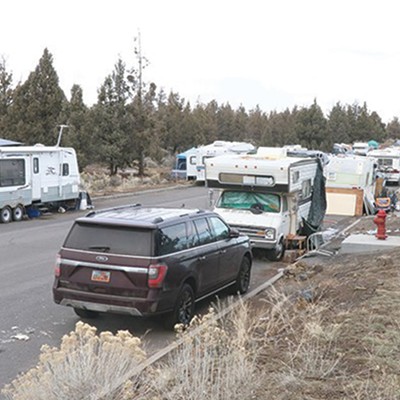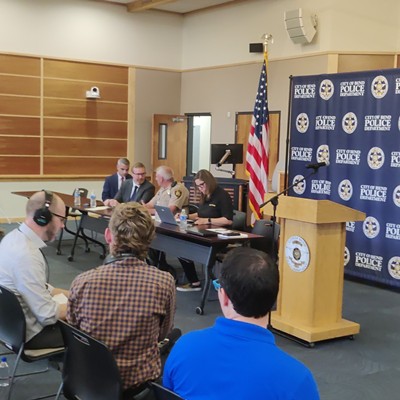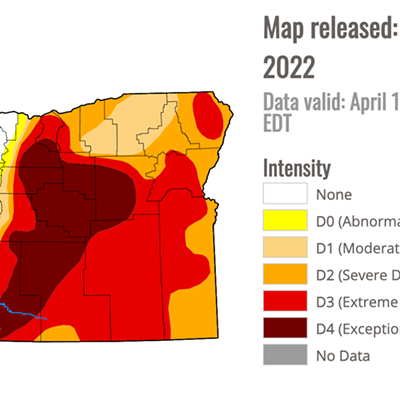The hit movie "Sully" starring Tom Hanks and directed by Clint Eastwood is reaping strong box office revenue–but it's also having a major impact on a Bend aviation company that specializes in the manufacture of equipment for a global aviation market. Precise Flight CEO Doug La Placa tells the Source Weekly, "Everybody in this company has been working long hours for the past couple of weeks."
Precise Flight has developed technology that helps prevent airline bird strikes—exactly what brought down US Airways Flight 1549 on Jan. 15, 2009, in what has been termed the "Miracle on the Hudson." The plane flew into a flock of Canada Geese while climbing after takeoff from LaGuardia Airport. Both engines immediately lost power, and about six minutes later pilot Chesley Sullenberger III successfully landed the plane on the Hudson River near watercraft that helped rescue the 155 people on board. Everyone survived. To many, it was nothing short of a miracle.
La Placa says he had no knowledge of the movie until he became CEO of Precise Flight this past summer. It presented such a marketing opportunity for the company that they sent a pair of movie tickets and a letter to scores of aviation officials to call attention to the pulse light system it manufactures that helps keep birds from colliding with aircraft. "It's not an exaggeration. We have reached out to everyone in the aviation industry over the past two months. We'll have some very exciting news that we'll be announcing in the near future."
"Bird Strikes are a very real and growing problem for the airlines," says La Placa. Bird populations—especially large birds like geese and cranes—are growing rapidly. La Placa says the Canada goose population has grown by a factor of 10 in recent years. At the same time, there has been a significant increase in global air travel resulting in more bird strikes over the past 10 years. One recent bird strike forced the emergency landing of United Flight 766 at Portland International Airport.
When birds and aircraft collide, it's not only dangerous but costly. "Globally, bird strikes will cost commercial aviation $3 billion in damage in 2016. Domestically, it will cost airlines $1.2 billion," says La Placa. The vast majority of the cost is in delays, inspections and cancellations forced by required safety checks, while only about 10 percent of that cost is associated with repair work.
Precise Flight's Pulselight system is manufactured with parts made in Oregon and assembled at the company's facilities near the Bend airport. The company employs 33 full time staff. Qantas was the first airline to install the bird strike deflecting technology on its commercial aircraft. A few years later, Alaska Airlines followed Qantas' lead.
Although not 100 percent failsafe, the results seem to be very encouraging. Qantas conducted a 32-month study after installing the safety equipment, showing bird strike reductions of 30 percent in larger jets such as the 747 to 66 percent in smaller 737 800s. Alaska Airlines reports similar results.
Three years after installing Pulselight, FAA data shows Alaska had a 32 percent reduction in bird strikes.
According to La Placa, the system is based on a simple science-based solution to a complex problem. It's an electrical modification system which allows the pilots to pulse existing external lights on an aircraft. "Static lights create a false and dangerous illusion that an object is stationary or moving very slowly," says La Placa. "When you add movement to lights, it accentuates the speed and directional movement of the aircraft." The result is that more birds avoid the craft. Motorcycle companies are using similar technology to produce a pulsing headlamp.
Pulselight has its roots at Precise Flight in the 1990s when the system was developed and used to reduce the chance of mid-air and ground collisions. As La Placa tells it, a Qantas pilot noticed a business jet with the pulsing lights. He spoke with the private pilot and was told it also reduced the chance of bird strikes. Word got back to Precise Flight which then began conducting tests. What was intended to be a system used to help reduce mid-air or ground collisions grew to a system that also helps prevent bird strikes.
It was an unintended stroke of good fortune on which Precise Flight and its CEO La Placa are now capitalizing to maximize Pulselight's potential in the global aviation market. With yet another unintended marketing boost from the Eastwood/Hanks movie, the company is expecting more airline companies to utilize its technology.
























